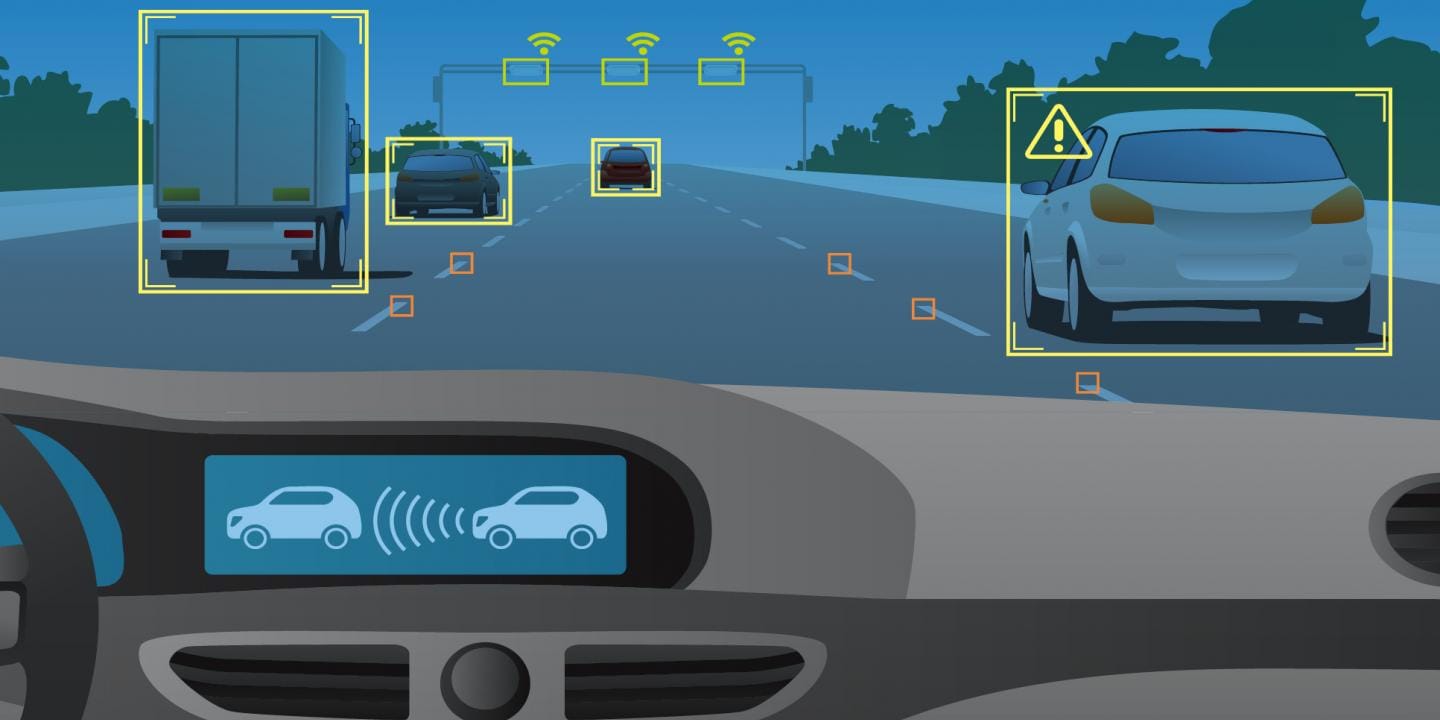Your safety with an optimal ADAS-system
Modern cars increasing use ‘Advanced Driver Assistance Systems’ (ADAS). These systems assist drivers in dangerous or critical situations. As a result, ensuring that the technology always works optimally and is recalibrated after damage, is important.

ADAS (or Advanced Driver Assistance Systems) is the collective name for the rapidly growing arsenal of sophisticated driving assistance and safety systems in newer vehicles. These systems help the driver to have a more comfortable and safer driver experience and thus to avoid accidents. The technologies make intensive use of cameras, radars and sensors positioned around the vehicle and that monitor the wider environment. They detect potential hazardous situations, so that the car and the driver can respond in time to prevent an accident.
Soon on every vehicle
As is usually the case with new, advanced technologies, ADAS first appeared in more expensive cars from the top segment. However, it soon became commonplace. Today, there are several ADAS across the entire range of car brands. Furthermore, from 2022 onwards, manufacturers will be obliged to equip cars in the EU with ADAS.
One of the better-known systems is undoubtedly ABS or the anti-lock braking system. Let’s look briefly at a few other common ADAS. These technologies sometimes act independently and therefore form the basis for semi-autonomous and safer driving.
- Lane assist system
Several sensors determine the vehicle’s position on the road. The system gives a warning via an alarm or vibration in the steering wheel and autonomously corrects the vehicle’s position if the vehicle threatens to stray out of its lane on the road.
- Adaptive cruise control
Based on information of the traffic ahead – obtained from the cameras and sensors – this system will automatically accelerate or decelerate. Bringing the vehicle to a complete stop is also possible, and then reaccelerate to the speed previously set.
- Advanced emergency braking system
Using the sensors and cameras this system estimates when a collision is very likely. The technology then applies the brakes and in the next phase autonomously executes an emergency stop to prevent a collision.
Good operation assured
All these sensors, cameras and radars are integrated around the vehicle – in the bumpers, behind the grille, at the rear, behind the windscreen – and are thus more vulnerable in the event of a collision. If those safety systems are damaged or disrupted, they will no longer work properly and that is a dangerous situation. Furthermore, ADAS require precise calibration as prescribed by the manufacturer.
For this reason, setting the ADAS extremely accurately after a collision or damage to the bodywork or windows is crucial. Professional expertise is essential for this re-calibration. At Carr&Repair we not only repair damage to the bodywork and windows. We also have the essential knowledge and expertise of ADAS. We work with the correct, professional equipment and our staff have completed the appropriate training perfectly in order re-calibrate the ADAS of your vehicle. That is your guarantee to get back on the road safely.